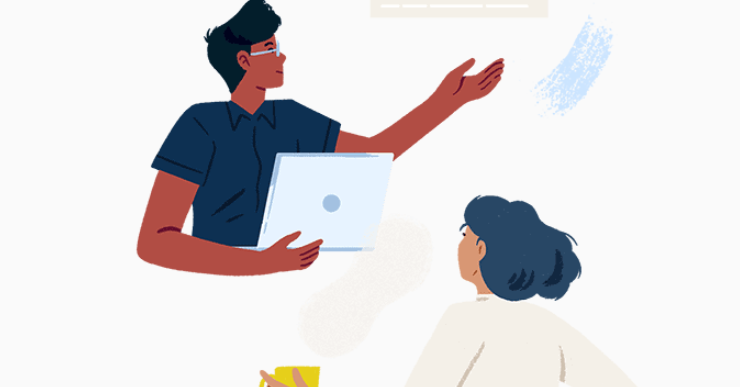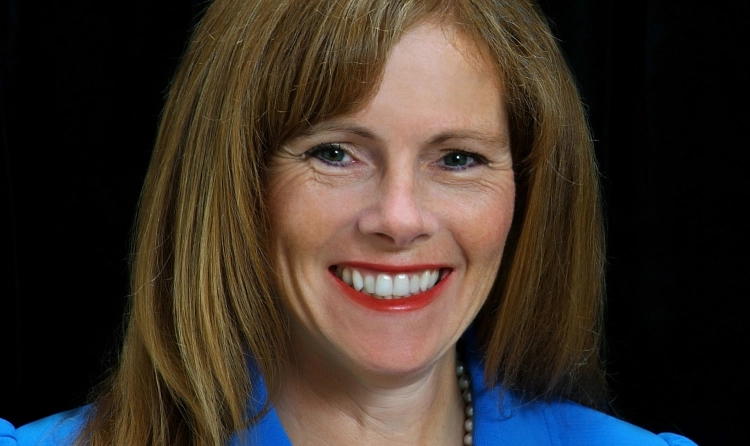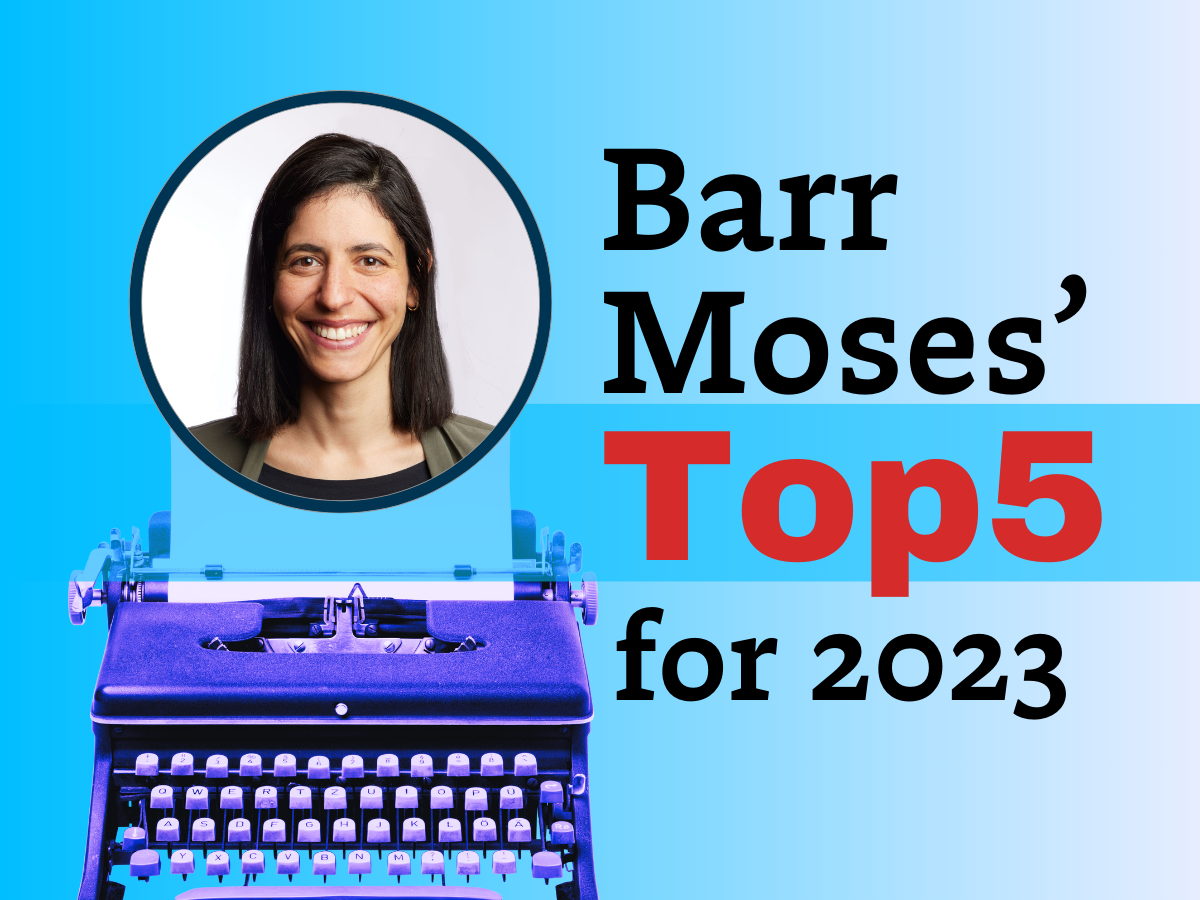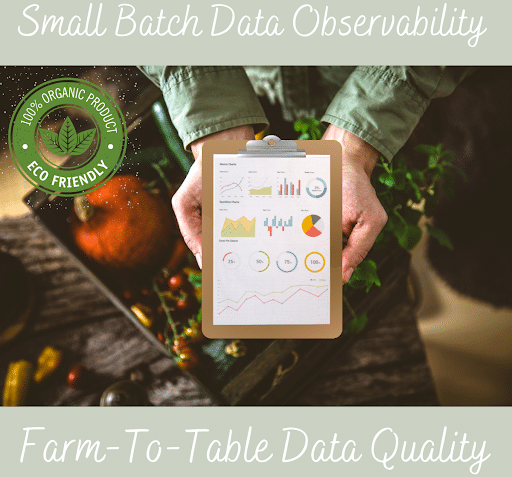Building a Better Data Culture: An Interview with ThoughtSpot’s Cindi Howson

We sat down with Cindi Howson, Chief Data Strategy Officer at ThoughtSpot, the leading search and AI-driven analytics platform, for a wide-ranging conversation about her daily work, common challenges organizations face on the road to data democratization, and diversity in data science.
Over the past few decades, the world of data analytics has undergone transformation from a siloed entity to a cross-functional powerhouse. Now, in 2021, in this decade of data, the time is ripe for yet another sea-change, this time in the form of data democratization and accessibility.
Paving the way forward for this new movement towards actionable and accurate analytics is ThoughtSpot, and at the helm of the company’s customer data enablement initiatives is Cindi Howson, Chief Data Strategy Officer.
Fresh off Snowflake’s $20M investment in ThoughtSpot, Cindi has been busy. From helping organizations more intelligently leverage their data to advocating on behalf of women in STEM, Cindi is one of the preeminent voices in data analytics. And for good reason.
Prior to joining ThoughtSpot, Cindi served as a VP at Gartner and lead author of the Magic Quadrant for Analytics and Business Intelligence. She also created the BI Scorecard, one of the first industry frameworks for evaluating business intelligence solutions. And now, at ThoughtSpot, she’s directing the conversation around what it means to build (and scale) data strategy across the enterprise.
We chatted with Cindi to learn more about her journey in data analytics, what’s top of mind for ThoughtSpot, and how the industry can make STEM more inclusive:
Throughout your career, you’ve assessed all sorts of BI and analytics solutions to help your customers better understand that landscape. Were there any industry trends that surprised you?
One of the biggest surprises to me is that we still are not good evaluating new technologies, as crazy as it sounds.
If you think about when the iPhone first came out, people were like, “Wait. Where’s my keyboard?” They were comparing it to the Blackberry. Even when the iPad came out, you’d say, “Wait, where’s that USB drive?” We keep wanting to fit things back into old evaluation frameworks. As a tech industry, we have to be aware of the limitations of old frameworks and how slowly they move.
One thing we care about is making analytics easy for everyone—taking the concept of consumer-grade ease, like Spotify or iTunes, and applying that level of ease to data and analytics. If nobody’s ever thought about that before, it may not even appear on your evaluation list. And I’m surprised that we still haven’t figured out how to do that any better as an industry.
Could you share a little bit more about your role today as a Chief Data Strategy Officer? It sounds like folks often make the mistake of thinking that you might be responsible for shaping your own company’s data culture internally, but that’s not the case at all.
So really, there are three facets to my role. One is working with our top customers, coaching them through roadblocks. And a lot of those roadblocks blocks are not technology—it’s culture. It’s people change management and data fluency, so I help them navigate these things. it also might be looking at what’s the right tool for the right user, and use case managing their BI tool portfolio.
But as I work with our customers, they will also give me feedback on where we need to take our product to continue to be the best and leading edge in the market. So I work with our product teams on either addressing gaps or charting the next wave of disruption and innovation.
And then the third part is really things like this, Barr—being a thought leader and meeting with people like you. So last year, one of my goals was to launch the Data Chief podcast, which I was able to do with the team, along with participating in events across the industry.
I’ve seen this phenomenon of data hoarding, where organizations ingest, transform and process so much data on a daily basis—but really only a very small fraction of this information is actually being used. How do you think data organizations can cut through the noise and derive more value from their analytics?
I don’t know that we are hoarding so much as the technology lagged. The ability to capture the data was ahead of our ability to get the insights out there.
And this is where I do think the cloud has changed the game. Historically, because of limited compute and desktop analytics products, so much of the analysis had to be aggregated and simplified for performance reasons. Running analytics in the cloud, you no longer have to do that. I think that’s part of why we’ve fallen into this trap of capturing more than actually analyzing.
How can data teams at legacy companies get started on this journey of migrating to the cloud and driving digital transformation? What have you seen that works best, if anything?

To start, we can’t call them legacy companies, because they’re not dead. But maybe we’ll call them laggards, I think that’s the Harvard Business Review term.
I think what the pandemic has shown us is that things that you used to think were impossible, like putting customer data in the cloud, even sharing healthcare or other private data—actually, it’s quite possible. And it’s quite possible to do things faster when you have the business outcome aligned. If you go to old school processes, you may let fear and resistance to change slow you down and get in your way. And that is when these organizations will become legacy organizations.
I think about Clayton Christensen, and his ideas about disruptive innovation and creative destruction: just because you’re operating well today does not mean that you will be the leader tomorrow. I heard a quote I love from a leader at Instacart, saying “Your next competitor may be two women in their college dorm room, coming up with the coolest startup.” Cloud and open source tech have lowered the barrier to entry across so many segments
That’s definitely part of the trend of data democratization, this movement around making data accessible to everyone. In your opinion, what does true data democratization look like?
I often have this image in my mind of the old-school telephone operator or switchboard connector. That’s really what has happened because BI tools were originally so hard to use, and required expert training. And that model doesn’t scale, and it doesn’t help the business.
People who know the domain, who know the questions they want to ask, should be able to get to the insights. There’s so much whispering down the line that goes awry. And there’s a dashboard backlog that my customers will talk about. The supply and demand are imbalanced, because the demand for new data, more timely insights, and more sophisticated questions is outpacing the supply of analysts that can answer those questions.
You mentioned previously that tying to business outcomes is helpful in migrations or driving transformations. How do data leaders that are responsible for these important initiatives tie them to business outcomes?
I often tell CDOs and analytics leaders to start with their biggest pain point or highest-value opportunity. You don’t want to start with your ultra-messy data because people will lose interest and lose faith.
Say customer loyalty is the number one priority at your business. We measure that through NPS scores, but there are other metrics like time to respond to a service request or on-time delivery that relate to customer loyalty.
By understanding those numbers and identifying the service reps with the lowest NPS scores or response times, you can dig into the why behind those data points. Do they have the lowest NPS scores because of training? Maybe it’s that their headset phone isn’t all that great? We can fix those things. So democratizing data is really an enabler of executing on those business outcomes.
And I think a lot of people start bottom-up because change is not coming top-down. Those data professionals or technology professionals might be the ones that know the art of the possible. So they might do a proof of concept or technology to say, well, we have this data, and we think it’s a value nobody’s looking at it. Let me quickly show you the art of the possible.
To me, the difference between a technology initiative and a digital transformation is that after you’ve proven the concept, you must find a champion to say, “Yes, this will help improve our business performance.”
Another challenge I see often is that no matter how great your data analytics solutions are, it’s quite hard to derive meaningful insights if you can’t trust your data. How have you seen customers tackle data quality and data reliability?
Trust is a huge issue. This does get very much into data literacy, or as we like to say, data fluency.
I do think data skills will continue to be built up as the must-have skill for the entire workforce. And we’re already seeing this being taught increasingly in elementary and junior high. Even the SAT now actually includes questions to address somebody’s data literacy. But right now, most workers are not data literate. Unfortunately, with COVID, you really could see that people don’t understand where the data comes from and what it means.
You build trust when people understand where the data comes from, and when they understand that even high-quality data will never be perfectly clean. I like how one of our data analytics leaders talks about “Is the data directionally accurate—accurate enough to make decisions on it?”
Now there are some things that have to be perfect. You have to get your blood type right, for instance. But if I’m looking at campaign analytics and customer experience trends, we can make decisions with accurate-enough data.
A few years ago, you wrote a great article called We can Put a Man on the Moon But We Can’t Keep Women in Tech. I love that title about the business case for diversity in tech, and about what’s stopping us from achieving sort of a more equitable workforce. Increasing diversity in representation in STEM is a huge priority for many data-driven companies, but obviously, many of them fall short. In fact, according to BCG, only 15% of today’s data scientists are women. In your opinion what are some of the things we need to do wildly different in order to create a more inclusive industry?
I’d like to say, well, since I wrote that blog a year ago, things have gotten better. But unfortunately, in the pandemic, things have actually gotten worse. Part of it is related to virtual schooling and women having to teach from home while working from home, and then also maybe caring for sick parents or siblings. This is hard.
If there’s a silver lining, I will say, the racial injustices that have happened in 2020 with George Floyd and Breonna Taylor have raised the level of the conversation. People are now saying, we can’t just keep talking about this. We actually do need to align it with action. So what I’ve been pleased to see is that organizations are actually measuring these things more and proactively putting plans in place to address it. For example, Starbucks now is tying executive compensation to their executives meeting various diversity targets. And NASDAQ has a proposal to make diversity metrics a requirement to be even listed on NASDAQ.
Now I do have a fear—hopefully, it will be misplaced or unfounded—but a fear that this will backfire because nobody ever wants to be hired to tick a box. They want to be hired because they’re the best person for that job. They just don’t want these unconscious biases or systemic biases to get in the way of even being given a shot.
Let’s end with some fun questions. What was your favorite book in 2020?
On the fiction side, I loved The Giver of Stars, based on a true story about the Packhorse Librarians of Kentucky. And then from the business and the analytics side, I really liked John Thompson’s Building Analytics Teams and The Culture Map from Erin Meyer.
What about podcasts or newsletters? Do you have any favorites that you’ve learned this year?
I do listen to Snowflake’s The Rise of the Data Cloud. If I’m allowed to say, I love the guests that have so willingly shared their inspiration on The Data Chief. So I actually listen to it after it’s recorded. And of course I listen to Brene Brown.
For newsletters, I just subscribed to one from James Clear, the author of Atomic Habits, and it’s really good.
Interested in learning more about Cindi’s work at ThoughtSpot? Follow her on Twitter or LinkedIn!
Read more from our Data Downtime Interview series:
- Bringing Reliable Data and AI to the Cloud: A Q&A with Databricks’ Matei Zaharia
- On Data Governance: Maria Villar, Head of Enterprise Data Strategy and Transformation, SAP
- Fighting Churn with Data: An Interview with Carl Gold
Book a time to speak with us using the form below.
Our promise: we will show you the product.
 Product demo.
Product demo.  What is data observability?
What is data observability?  What is a data mesh--and how not to mesh it up
What is a data mesh--and how not to mesh it up  The ULTIMATE Guide To Data Lineage
The ULTIMATE Guide To Data Lineage 





